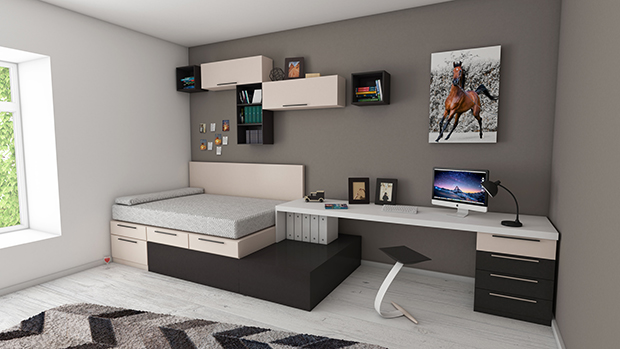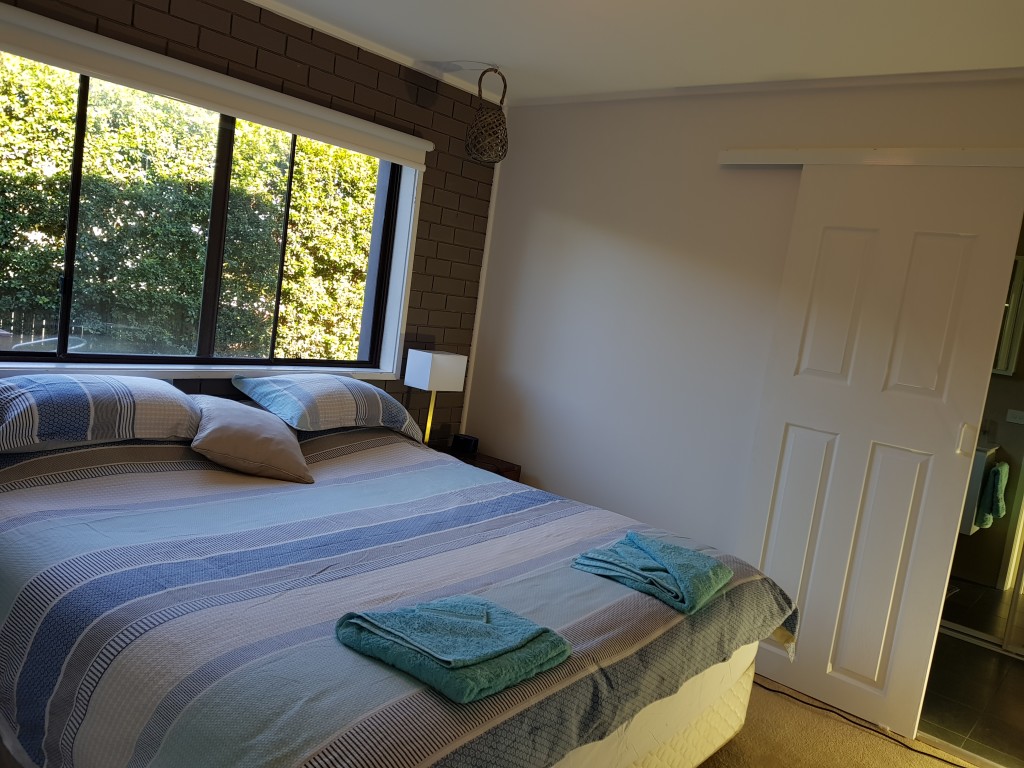Homeowners and property developers are always looking at ways to maximise the use of their land. With smart homeowners looking for an extra passive income stream the natural addition is to build a granny flat which they can lease or host on Airbnb as a holiday rental.
Others may purchase the property with plans to demolish the existing house and build their dream home and for property developers typically renovating an existing home and building duplexes to maximise the real estate is a common economical approach.
Adding a granny flat option to your home is useful for providing additional living areas to a home, without going down the route of property subdivision. Whether it’s to provide separate housing for your growing family, or as an additional source of income to ease your mortgage, there are pros and cons to building ancillary accommodation on your land.
Building a Granny Flat

Building ancillary accommodation falls under the same requirements as any home extension. An architectural plan is needed to ensure it suits the property and helps give an estimate of the financial impact the new construction will have. Planning approval will be needed before construction can begin. A requirement for getting approval will come down to the size of the granny flat, and whether the additional living area still falls within the council’s ratio of living area to available land – the plot ratio.
Much like building a new home, granny flats will require services being connected to them based on their inclusions. Electricity is a given, as all granny flats will have lighting, smoke alarms and power requirements. If fitted with a kitchen and a bathroom, there will also be the need for running water, drainage, and possibly gas services. Telecommunications may also be built into the structure to let the inhabitants communicate with the outside world.
Connecting Power – Mains power vs sub-meter
The two different options to consider when connecting power to a granny flat are either using the existing homes mains power or installing a separate sub-meter.
You have the choice of long term rental options or going with short term rentals such as airbnb. It all comes down to what suits your requirements and how you intend to use your granny flat.
MAINS POWER
A mains power cable is used to connect the new building to the existing homes power supply, which means that you will get one electricity bill for the whole property. It will not separate power connections for each of the dwellings. This option is usually sufficient for the Airbnb style all inclusive holiday rentals as the electricity usage can be built into the daily rental rate. However it’s worth mentioning that incorporating the additional electrical bill into the rental amount can be risky to estimate especially if a tenant runs many power-hungry appliances.
Learn what’s involved in updating a switchboard to accommodate the added electrical demands of a new granny flat. Check out this project we did in Elanora Heights, NSW or this one in Allambie Heights, NSW.

SUB METERING
Homeowners looking for longer term rentals, it may be a better option to install a electricity subsidiary meter (sub-meter). Sub-meters allows the homeowners to provide accurate power usage consumption to the granny flat for billing purposes. What property owners needs to consider:
- Install a Kilowatt Hour Meter. These meters are fitted into the homes meter box and provide a figure on the electricity supplied on a set circuit – ideally the power to the granny flat.
- Install a separate meter and power supply to the granny flat. The most expensive of the options, but it would allow for accurate billing to the new building. This would help minimise any disputes that may arise when the time came to apportion the electricity bill.
COMMUNICATION CABLES
When providing communications cabling to the new unit, whether for telephones or data transfer, there are some questions to ask:
- Will the granny flat have a separate line?
- If a new line is required, there may be additional infrastructure charges.
- If no new line is installed, what provisions will be made?
- Will there be a data terminal connected to the original home?
- Or will a wireless internet and voice package be needed?
Renovating to add a granny flat
Haven’t got the room or the money to add a new granny flat, why not consider renovating your shed or garage into a granny flat? Or maybe you have a space to convert a studio? While a licensed electrician can provide new power points and lighting to a home, there are limitations to what they can do when adding granny flats to existing properties.
Energy Efficient Solutions
An alternative to providing electricity through the conventional method, sustainable designs and solar collection systems can keep the granny flat powered without connecting to the grid. By connecting a bank of solar panels to a battery storage system, the new unit could potentially be self-sufficient. A smaller home will likely have a lower energy requirement, particularly one that is designed to be energy efficient.
Reduce lighting needs by fitting the unit with skylights and efficient LED globes. Likewise, using the right insulation and suitable ventilation can reduce the heating and cooling requirements. When combined, these two elements can minimise the amount of energy required to keep the home running comfortably. See more changes you can make to reduce energy consumption.
Can I Call any Electrician?
Whether you are adding a granny flat or renovating an existing property to add a granny flat, you’ll need an accredited Level 2 electrician to ensure the flat is wired correctly and safely. A standard licensed electrician isn’t qualified to deliver certain parts of the electrical work that’s required to supply electricity to a granny flat.
What’s a Level 2 Electrician?
‘An Accredited Level 2 Electricians is certified to perform work on the Electricity Distribution Network.‘
Don’t Get Caught Out
Always check that your Electrician’s accredited. Don’t be shy, your electrician should be able to provide proof of their accreditation.
In order to obtain accreditation, the technician:
- Must be certified in their training for completing the works
- Have a full working knowledge of all the relevant Acts and Regulations
- Will be graded by an independent assessor. The gradings will take into account projects that have been completed by the technician.
We never take offence to this question because it’s all about safety first, not only for our team but for your family.
Additionally you can even do a quick check online, the New South Wales Department of Energy and Resources maintains an up to date list of all Level 1, Level 2, and Level 3 Accredited Technicians on their website.
Understanding the definitions
Depending on the type of work you’re getting done you’ll need to make sure they are accredited in the correct class to do so.
- Class 2A = Disconnect and reconnect at connection point (previous Category 1)
- Class 2B = Underground services (previous Category 2)
- Class 2C = Overhead services (previously Category 3)
- Class 2D = Metering Energising Installations – including disconnect and reconnect (previous Category 4)
- Class 2X = Non-electrically qualified D
Whether you’re building a granny flat, a new home or constructing an entire set of duplexes, be sure to ask the right questions and seek the right advice before committing to contract the services of an electrician. The last thing you want is for construction to grind to a halt once the wheels are in motion.
OTHER LEVEL 2 ELECTRICAL CONSIDERATIONS
Demolishing an existing home
- Disconnecting and reconnecting the electrical supply
The first step when deconstructing an existing home is the disconnection of the electrical services. This is to eliminate the risk of electrocution throughout the demolition process. Once all the building of the new structures has been completed, the Level 2 Technician will be required to connect them to the main supply.
- Repairing an existing electrical supply
The current power cabling may erode over time or become damaged during deconstruction, leading to the issue of a defect notice for unsafe situations. This situation requires a properly trained and certified technician to carry out the repairs effectively and restore safety to the home.
General electrical work
There are also many situations when a Level 2 Technician is needed before the completion of a new construction, regardless of whether the new structures are residential or commercial. These are:
- Providing temporary power to a building site
As construction progresses on the site, builders and construction workers need temporary power to operate tools and safety equipment.
- Upgrading electrical mains
Whether it’s due to drawing on an increased current, or to specialised power equipment, three-phase power may be required to the site. Not only will you need to upgrade the mains run, but you’ll also need an upgraded electrical meter.
- Installing new meters and switchboards
Regardless of the size of the development, additional meters will be required per unit. The scope will be determined by the number of residences or commercial units being built on the same lot and may require the installation of a switchboard.
- Providing and repairing overhead or underground power connections
Occasionally, a new power source such as a new power pole is required to provide electricity to a development. Regardless of whether the supply is from overhead lines or an underground source, an accredited technician will need to carry out the works.
As with any major purchase, it is always best to speak with professionals to get an accurate idea of what to expect. If you’re looking at building a granny flat on your property and would like to know more, give the experienced team at Everest Electrical a call today on 0410 229 139.


